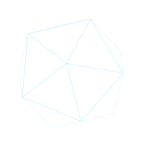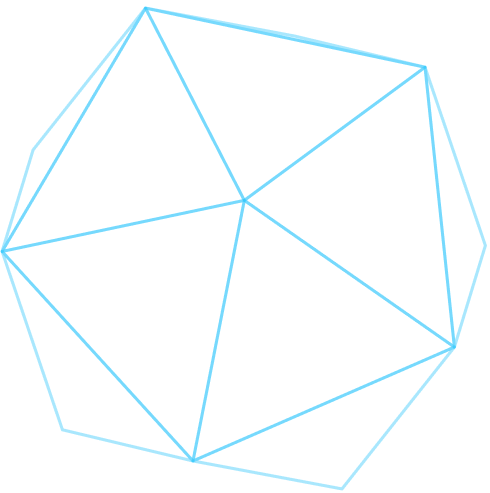The Internet has never stood still. Initially, Web 1.0 was simply plain, static pages that we could only read. Next came Web 2.0, with Facebook, YouTube, and other social networking websites. In this age, we not only read but also wrote, uploaded videos, and communicated with others. We are now moving into Web 3.0, where the Internet is freer, smarter, and more real-like. This new era is powered by and technologies such as blockchain, artificial intelligence, and AR/VR that have narrowed the gap between the physical and digital worlds.
The next five years will be nothing short of revolutionary. Companies, artists, and consumers will all see websites transform from mere windows of information into places that provide interactive, smart, and even fully immersive environments.
Let’s take a look at how Web 3.0 will redefine the destiny of websites.
Partner with KoderHive, your expert team for Web 3.0, blockchain, and immersive website development. Contact us today to start your transformation.
The Core of Web 3.0
Decentralisation is central to Web 3.0. In contrast to Web 2.0, in which a couple of giant technology firms control the majority of the Internet’s information, Web 3.0 returns power to the people. This new architecture, led by blockchain, delivers openness and reduces the role of intermediaries.
In Web 3.0, the actual ownership of data will belong to the user. In Web 2.0, most businesses gained from users’ personal data. That is to say, you will be in control of what data you want to share, with whom you want to share it, and for what purpose you would want to allow it to be used. This is a form of digital freedom.
Smart contracts shall be the cornerstone. These are computer-code-based contracts that automatically respond to set conditions. One will not trust a person or organisation but the system and the blockchain, which is open and unchangeable. Transactions, cooperation, or any form of contract can thus be done fast, safely, and effortlessly.
AI-Driven Experiences
Artificial intelligence (AI) and machine learning will play a major role in Web 3.0. Websites will now automatically understand who you are, what you like, and what you are interested in. Then they will show you content and offer accordingly. This means that each user’s internet experience will be unique and special.
Virtual assistants and chatbots in Web 3.0 will become smarter than ever before. They will not be limited to answering simple questions, but will become true digital companions that will anticipate users’ needs, suggest better alternatives, and provide seamless guidance every step of the way.
Artificial intelligence has the ability to predict users’ next steps. This means that websites will be able to understand what the user is going to do next and will immediately change their content or features accordingly. This way, the user will not have to search repeatedly or put in extra effort because the website will already provide suggestions and amenities according to their interests and needs. This process will make the online experience feel faster, easier, more personal and more natural.
Immersive Technologies: AR and VR Integration
Sites in the next five years will no longer be two-dimensional flat screens but rather virtual worlds. Virtual reality (VR) and augmented reality (AR) will merge to create 3D shopfronts that enable customers to walk around, see products, and react in real time.
Virtual Shopfronts and 3d Experiences
Imagine buying furniture online and previewing in AR how it would appear in your living room all at once. Or going shopping in a fashion company’s virtual store where you can “try on” items in VR before you buy.
Blurring Boundaries Between Digital and Physical Interaction
Everything will blur boundaries. The line between being online and offline will vanish as physical shopping, learning, entertainment, and collaboration get powerful digital twins in immersive environments.
The Role of the Metaverse
The metaverse is no longer science fiction; it’s becoming a real digital economy. In Web 3.0, websites will act as portals to the metaverse, where people will be able to attend events, play games, study, or even create businesses in interactive virtual worlds.
For companies, the metaverse is an opportunity to build communities and more immersive customer experiences. From virtual product launches to interactive community centres, it will transform how businesses interact with humans, especially when combined with business process automation services that simplify operations and increase efficiency.
Privacy, Security, and Digital Identity
As life on the web increases, so does trust and security. Web 3.0 will introduce self-sovereign identities (SSI), allowing individuals to fully control their digital self without having to depend on central platforms.
Rise of Self-Sovereign Identities
Users will own and bring their digital ID with them across platforms, ending perpetual logins and risks of identity theft.
More Secure Encryption and User Authority
Websites will rely on blockchain-level security, making hacks and unauthorised access many times harder.
Regulation and Compliance Challenges
But new liberty creates new duties. Governments and organisations will have to reconcile innovation and conformity, making privacy laws keep up with the pace of change.
Websites Turning into Decentralized Apps (dApps)
The website we are familiar with today will evolve into decentralized applications (dApps). Instead of running on central servers, dApps run on blockchain networks, offering transparency, availability, and durability.
This implies that no one person or organization can kill or control such platforms. Already, it is seen with examples such as Uniswap (for decentralized finance) and Audius (for decentralized music streaming) shows how dApps are revolutionizing industries. Many more websites will follow this model in the next five years.
Commerce in Web 3.0
What we purchase online is also about to change. Cryptocurrency payments will become mainstream, enabling instant, borderless payments. NFTs (non-fungible tokens) will move from collectibles into the mainstream; consider ownership verification, event tickets, or digital club memberships.
Tokenised loyalty programmes will also become more prevalent. Instead of earning points, people could gather tokens that could be swapped, traded, or redeemed on other sites, offering a fresh level of engagement between clients and companies.
What Businesses Need to Do to Prepare
The future is not just coming; it’s already here. Businesses that prepare now will stay ahead of the game.
- Invest in Web 3.0-enabled infrastructure: Upgrade hosting, security, and integration infrastructure to enable blockchain and AI technologies.
- Educate teams on blockchain and AI: a team familiar with new tools will innovate faster and react better.
- Experiment with small but future-proof approaches: pilot with NFTs, crypto payments, or experiences, but remember to scale.
Firms that see Web 3.0 as an opportunity and not a hurdle will build more customer trust and long-term success.
Final Verdict
Sites in the next five years will move from static digital catalogues to intelligent, decentralised, immersive, and secure spaces. Web 3.0 is giving power back to the people and opening endless opportunities for commerce, creators, and communities.
The choice is to get ahead of innovation early. If it’s AI personalisation, blockchain-supported trust, or immersive AR/VR, those who adopt will succeed in the new digital world.
At KoderHive, we help brands and enterprises move confidently into this new era of the internet, from blockchain-based apps to immersive AR/VR experiences.
Let’s shape the future of your web presence together. Contact KoderHive today to start building your next-generation website.
Similar Publications
Gorem ipsum dolor sit amet, consectetur adipiscing elit. Etiam eu turpis molestie, dictum est a, mattis tellus. Sed dignissim, metus nec fringilla accumsan, risus sem sollicitudin lacus, ut interdum tellus elit sed risus. Maecenas

How Enterprise Process Automation Helps CIOs Unlock Smarter Decision-Making
CIOs are at the intersection of technology, corporate growth, and strategy in this highly digital age. Their role extends beyond simply maintaining IT operations; it also involves leveraging data to...

Design Systems: The Secret to Consistency on Large Teams
When teams grow bigger, projects often get messy. One person may use a new color, another may design a different type of button, and developers might be confused about which...




